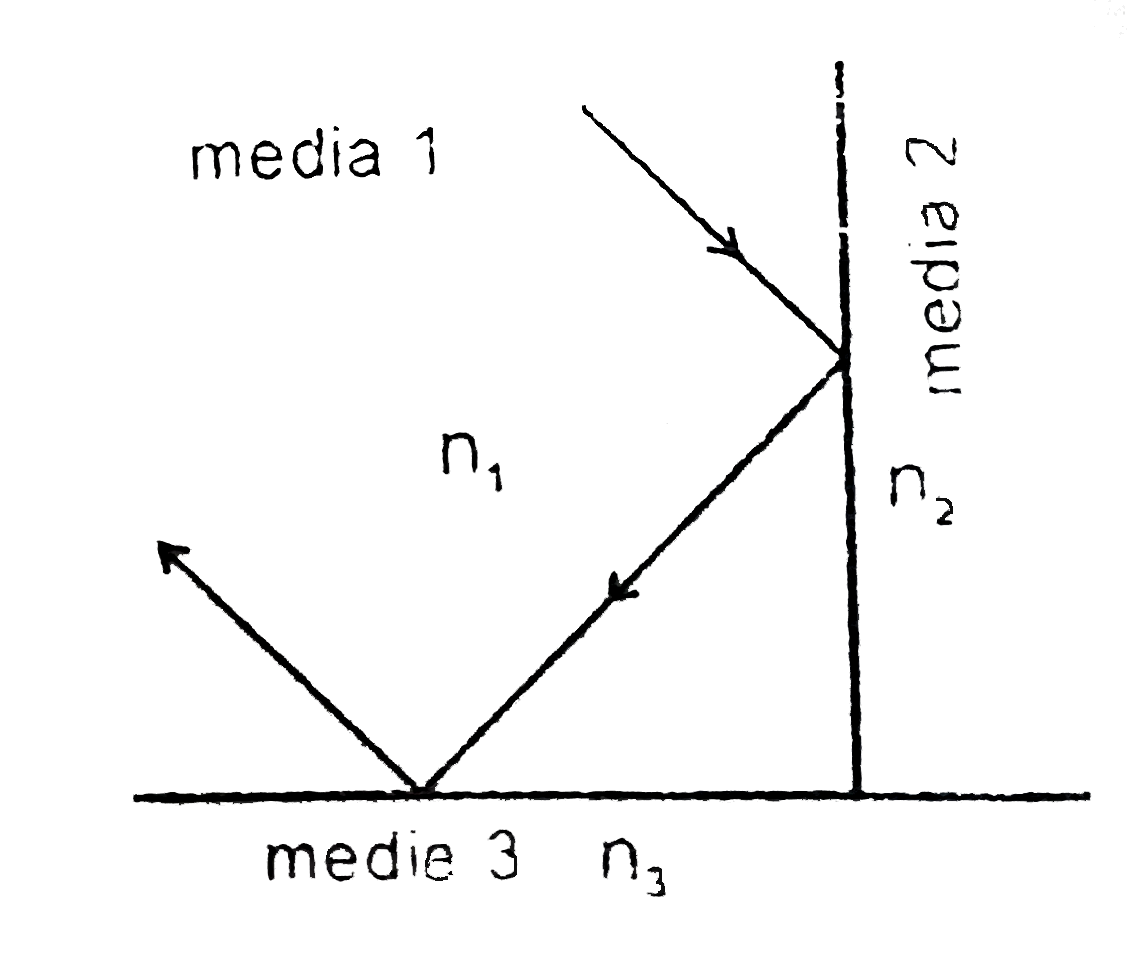Light travels in the same direction in all media.
The correct Answer is:False. Light does not travel in the same direction in all media.
Topper's Solved these Questions
- REFRACTION OF LIGHT Book:UNIQUE PUBLICATIONChapter:REFRACTION OF LIGHT Exercise:Textbook Exercises
Explore 7 Videos
- REFRACTION OF LIGHT Book:UNIQUE PUBLICATIONChapter:REFRACTION OF LIGHT Exercise:Intext Activities ( Can you recall? Textbookpg.no.73)
Explore 2 Videos
- REFRACTION OF LIGHT Book:UNIQUE PUBLICATIONChapter:REFRACTION OF LIGHT Exercise:Complete the analogy.
Explore 4 Videos
- PRACTICAL MCQsBook:UNIQUE PUBLICATIONChapter:PRACTICAL MCQsExercise:PRACTICAL WISE MCQS WITH ANSWERS
Explore 56 Videos
- SOCIAL HEALTH Book:UNIQUE PUBLICATIONChapter:SOCIAL HEALTH Exercise:ACTIVITY QUESTIONS
Explore 22 Videos
Similar Questions
In the diagram shown, light is incident on the interface between media 1 (refractive index n1) and 2 (refractive index n2) at angle slightly greater than the critical angle, and is totally reflected. The light is then also totally reflected at the interface between media 1 and 3 (refractive index n3), after which it travels in a direction opposite to its initial direction, The media must have a refractive indices such that.
 .
.
View SolutionLight travels in a straight line path while passing through different media.
View Solution
Knowledge Check
What is the ratio of relative speed of both the trains while travelling towards the same direction and while travelling towards the same direction and while travelling towards opposite direction ?
A10:1B9:2C1:10D10:3In the diagram shown, light is incident on the interface between media 1 (refractive index n1) and 2 (refractive index n2) at angle slightly greater than the critical angle, and is totally reflected. The light is then also totally reflected at the interface between media 1 and 3 (refractive index n3), after which it travels in a direction opposite to its initial direction, The media must have a refractive indices such that.
 .An1<n2<n3Bn21−n23>n22Cn21−n22<n23Dn21−n22>n23
.An1<n2<n3Bn21−n23>n22Cn21−n22<n23Dn21−n22>n23Assertion : Corpuscular theory fails to explain the velocities of light in air and water.
Reason : According to corpuscular theory, light should travel faster in denser media than in rarer media.AIf both, Assertion and Reason are true and the Reason is the correct explaination of the Assertion.BIf both, Assertion and Reason are true but Reason is not a correct explaination of the Assertion.CIf Assertion is true but the Reason is false.DIf both, Assertion and Reason are false.
X-ray and visible light travel at the same speed in vacuum. Do they travel at the same speed in glass?
View SolutionX-ray and visible light travel at the same speed in vacuum. Do they travel at the same speed in glass?
View SolutionA train travels for 60 km and men for 60 km in the same direction. Calculate the total distance and displacement travelled.
View SolutionLight from two source, each of same frequency and travelling in same direction, but with intensity in the ratio 4 : 1 interfere. Find ratio of maximum to minimum intensity.
View SolutionThe same colour of light takes t1 sec and t2 sec to travel the same distance ‘x’ in two media ‘A’ and ‘B’ respectively. Refractive index of medium ‘A’ w.r.t to ‘B’ is
View Solution
